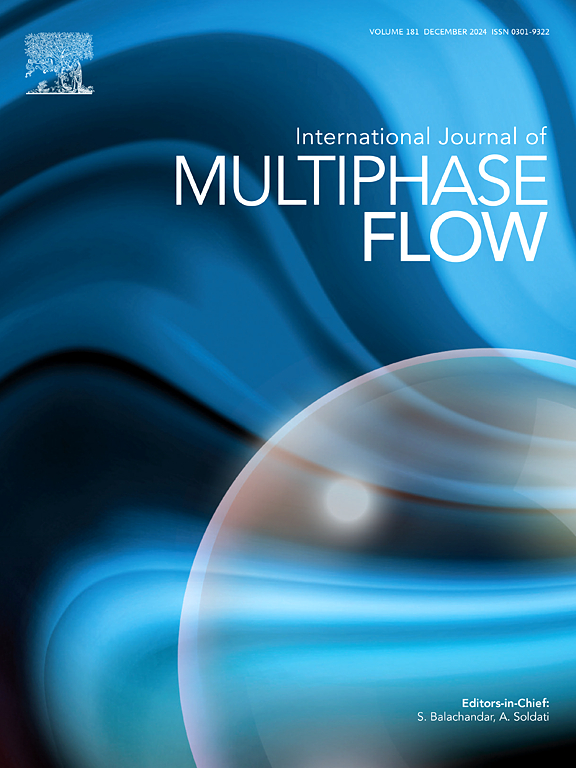Study of recirculation behaviors in Taylor cones based on numerical simulations
IF 3.6
2区 工程技术
Q1 MECHANICS
International Journal of Multiphase Flow
Pub Date : 2025-01-17
DOI:10.1016/j.ijmultiphaseflow.2025.105139
引用次数: 0
Abstract
In this study, we focus on investigating the hydrodynamics mechanism of recirculation cells (RCs) inside the Taylor cone. Based on the flow fields quantitatively obtained in numerical simulations, the startup process of RCs is established within 1 ms of the voltage being switched on. The time evolution of the RCs indicates that their intensity, quantified as the local velocity-gradient tensor, is highly dependent on the surface charge density. This is accompanied by surface charge convection under tangential electrical stress, creating a high-pressure region at the tip and pushing the liquid to flow backward. The effects of main process parameters, including liquid flows, voltages, physical properties of liquids, and temperature of electrospray device on the RCs, are given numerically, and the local competition between the viscous shear stress and tangential electrical stress is analyzed qualitatively through nondimensional analysis. The research shows that at higher fluid electrical conductivities, the RCs quickly reach their maximum intensity as the surface charge saturates. Cone-jets with high flow rates reduce the surface charge, and high fluid viscosities lower the velocity gradient, both of which weaken the recirculation. It is also found that the recirculation can be eliminated by lowering the temperature because the fluid becomes less electrically conductive and more viscous.

求助全文
约1分钟内获得全文
求助全文
来源期刊
CiteScore
7.30
自引率
10.50%
发文量
244
审稿时长
4 months
期刊介绍:
The International Journal of Multiphase Flow publishes analytical, numerical and experimental articles of lasting interest. The scope of the journal includes all aspects of mass, momentum and energy exchange phenomena among different phases such as occur in disperse flows, gas–liquid and liquid–liquid flows, flows in porous media, boiling, granular flows and others.
The journal publishes full papers, brief communications and conference announcements.

 求助内容:
求助内容: 应助结果提醒方式:
应助结果提醒方式:


